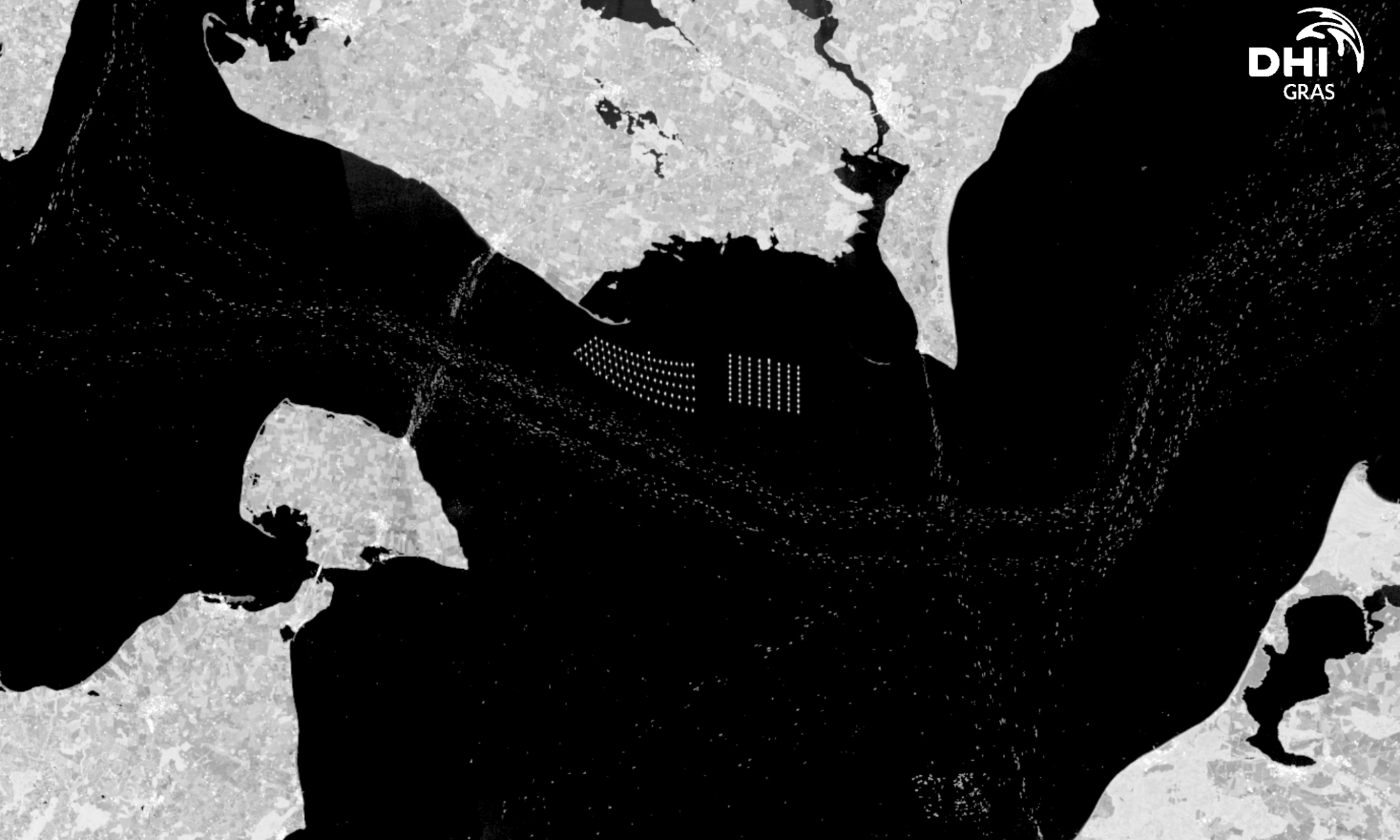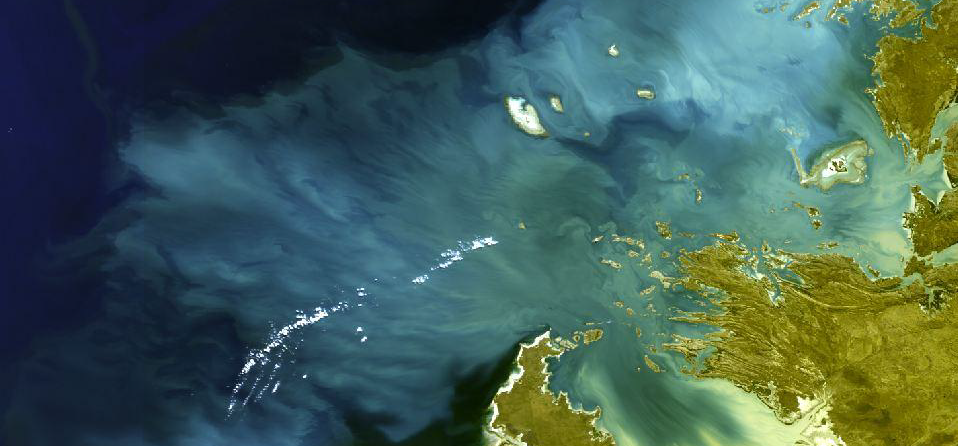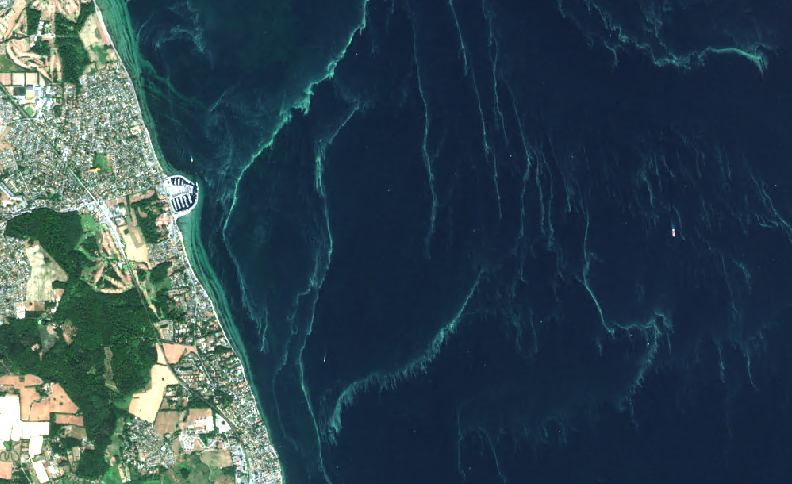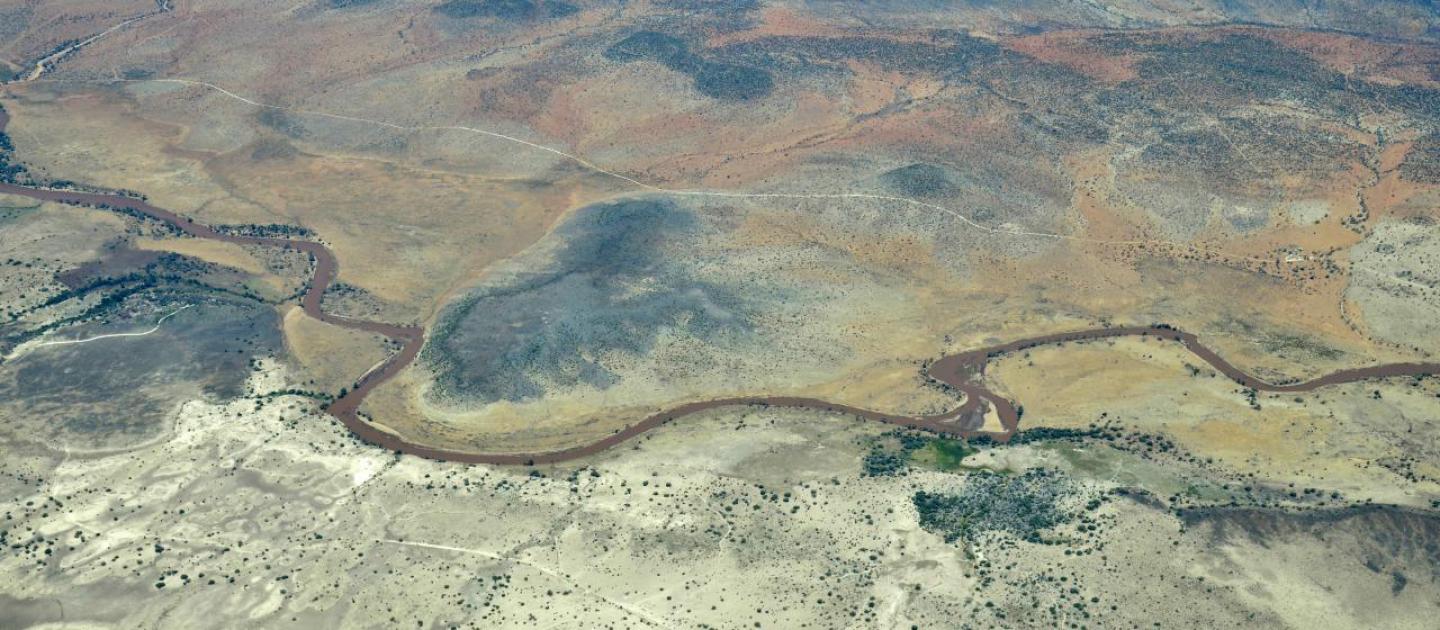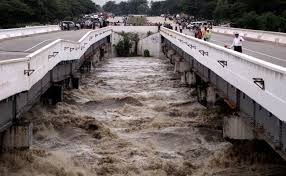Vessel traffic patterns in the Femern Belt:
28 September 2018
Vessel traffic patterns in the Femern Belt between Denmark and Germany captured by time series of satellite observations shows the highways at sea.
This satellite based information complements traditional sources of information such as AIS (automatic identification systems) and land based radar systems.
The first satellite constellation from the Copernicus Programme,
Sentinel-1, carries a synthetic-aperture radar (SAR) instrument which provides high resolution images regardless of weather conditions both day and night, making it eminent at monitoring the movement patterns of ships anywhere on Earth.
Currently more and more SAR satellite sensors are being added to space thus allowing for more frequent monitoring capabilities.
The image was created by combining over 300 Sentinel-1 images from 2017. In the image, each of the smaller dots represents a ship moving through the Femern Belt. Some offshore wind farms are also clearly visible.
DHI is greatly involved in the upcoming fixed link between Denmark and Germany, and it will be interesting to see how these vessel patterns will change in the coming years.
Copyright: DHI GRAS, contains Copernicus Sentinel data (2017).
EOatDHI part of the DHI GROUP
gras@dhigroup.com
+45 4516 9100
Agern Alle 5,
2970 Hørsholm,
Denmark
CVR: 36466871

